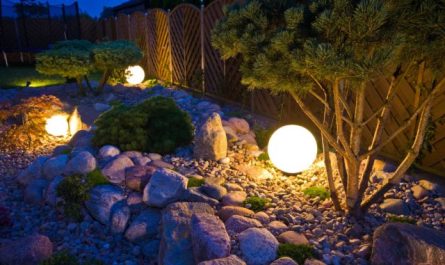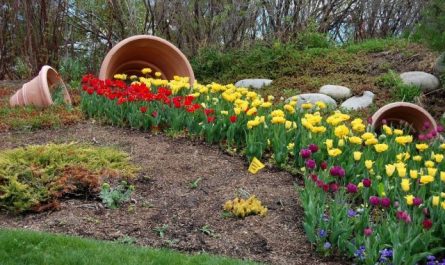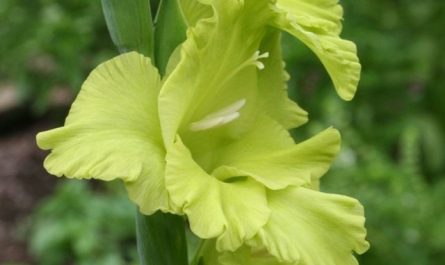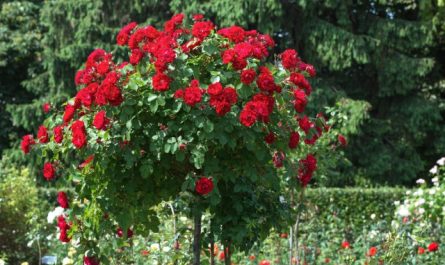A beautiful, well-groomed lawn with bright emerald green grass is not only a summer resident’s dream and a tribute to fashion, but also a sign of good taste of the owner of a country house. A trimmed lawn perfectly emphasizes all the elements of landscape design on the site – flower beds, alpine slides, garden paths. In addition, the lawn is also beneficial, absorbing dust, producing oxygen and slightly reducing the air temperature in the heat due to the intensive evaporation of moisture by the grass. However, creating a man-made meadow is not an easy task, requiring certain skills and strict adherence to technology. From the article you will learn about the main nuances, stages and rules for sowing a lawn.

Choosing a location for a lawn
Most grasses included in seed mixtures love light, so it is better to allocate a sunny, well-lit place for the lawn. Plants planted in the shade become dark or pale, stretch out strongly and lose their charm, as they lose their bright green color.
The area for the lawn should be level or located on a hill where the groundwater is deep. Lowlands are not suitable. Cold air stagnates there, excess moisture accumulates and the grass roots will begin to rot.
How to Properly Prepare a Plot for a Lawn
Preparing a site for sowing a lawn is a painstaking process that must be carried out very carefully. It is much more difficult than digging up the soil for a vegetable garden. Preliminary work consists of nine stages.
1. Cleaning the area
First, all the trash is removed from the ground: sticks, branches, glass, rusty nails, stones, even small ones, so that you can walk on the lawn barefoot and not cut your feet.
2. Weeding
The area must be completely cleared of weeds, otherwise they will break through the lawn grass, and it will be even more difficult to get rid of them. To do this, you need to dig up the ground to the depth of a shovel and manually select all the plants and roots from the ground. It is advisable to weed several times with a break of 5-7 days. It is especially important to get rid of bedstraw, creeping wheatgrass, yarrow and tansy.

If the lawn will occupy a large area and it is not possible to do the work manually, you will have to remove the top part of the soil (about 15 cm) together with the turf and use a continuous action herbicide (which is extremely undesirable, because it is chemical), which destroys all vegetation. Then select the already dried weeds.
3. Soil preparation
Lawns grow better on soils with a neutral reaction (pH 6,1-7). High-moor peat is added to alkaline soil, and dolomite flour or lime is added to acidic soil. Sand is added to heavy, clay soil and the area is covered with fertile soil. If the soil is unsuitable, sometimes the top layer is completely removed, replacing it with fertile soil.
4. Application of fertilizers
Fertilizers are applied when preparing the area for a lawn in advance, before digging the soil. For 1 m2 of area, you need 3 tablespoons of double superphosphate and ammonium nitrate, as well as 5 teaspoons of potassium sulfate. The fertilizer is evenly scattered over the entire area, and only then the soil is dug up. On heavy, clayey areas, it is good to also use humus at a rate of 5 kg / m2 to increase soil fertility.
5. Digging up the area
The area for the lawn is dug up to the depth of a shovel blade (approximately 30 cm deep). All clods are broken up, otherwise it will be difficult for the grass to break through. Then the area is carefully leveled with a rake.

6. Drainage
In some cases, drainage is done on waterlogged areas. If the lawn where the lawn will be is small, the upper fertile layer, 20-25 cm deep, is removed. Broken brick, expanded clay, pebbles or small stones are placed at the bottom of the hole. A layer of sand is poured on top of them. The sand is covered with fertile soil dug earlier. When arranging a lawn on a large area, the area is drained using a system of canals and wells.
7. Leveling the area
The area under the lawn should look perfectly flat, otherwise it will not look good. When preparing the site, the holes need to be filled with earth, and each hummock needs to be dug up. All these places will have to be leveled again with a rake.

8. Tamper
Most plants like loose soil. However, a perfectly smooth lawn is only possible on dense soil, so it will have to be compacted. This is easier to do with a special lawn roller weighing 50-100 kg.
If you don’t have such a device, place a sheet of plywood on the ground and tread on it thoroughly. Then move the sheet and compact the soil until you’ve covered the entire lawn. When you’re done, stand on the ground and see if your shoes leave marks. If so, the soil hasn’t compacted enough yet.
9. Lawn markings
After general preparation of the area, it is necessary to clearly mark the boundaries and shape of the lawn. If it is rectangular, pegs are driven in along the edges and a rope is stretched between them. If the green lawn has smooth curves and an irregular shape, the pegs should be driven in as close to each other as possible.
What grasses to sow on the lawn
You can sow a monoculture on the lawn or use a mixture of different grasses. One type of plant gives a more uniform, even covering, but there is a risk that your soil will not be suitable for this particular variety and it will take root poorly. Using a mixture reduces this probability to a minimum. In addition, different types of grass level and mask each other’s shortcomings, giving a stable result.

Types of lawns and composition of grass mixtures for them
Grass mixtures have different purposes. When choosing, you need to pay attention to their resistance to trampling and decide how often you will walk on the lawn. Depending on the type of lawn, the composition of the grass included in it will be different. The following options are the most popular.
Ground floor
The most beautiful of the ornamental lawns, intended solely for contemplation. Walking on it is not recommended. It often consists of a monoculture, such as creeping bentgrass, reed fescue.
Garden and park
The best option for a summer house or a private home. It does not require complex care, you can play with children on it, it is quite resistant to mechanical impact. Usually, the grass mixture for such a green covering includes sheep or meadow fescue, meadow bluegrass, creeping or white bentgrass, red fescue.

Sports
The most unpretentious option. You can play football, volleyball, and actively engage in sports on it. It is resistant to trampling and quickly recovers from damage. The seeds contain plants with a powerful root system: festulolium, pasture ryegrass, red fescue, meadow bluegrass, clover.
Mauritanian
It resembles a flower meadow, as it consists of flowering plants mixed with cereals. The mixture may include different types of clover, red fescue, timothy grass, cornflowers, daisies, pinnate carnation, phacelia, and daisies. You need to walk on such a lawn very carefully, it will not withstand intensive loads.

It is not necessary to buy a ready-made mixture; you can choose grasses for the lawn yourself. For example, the area is often sown with the following mix of plants: meadow bluegrass (20%), sheep or red fescue (70%) and common bentgrass (10%).
When is the best time to sow a lawn?
The lawn is sown in the warm season from the end of April to the second half of September (the dates for the central zone of Russia). However, the best results are obtained by planting seeds in May and early June. During this period, the soil is sufficiently moist, there is no scorching sun yet, which can destroy the shoots. Before the frost, the grass has time to grow and get stronger. When laying a green lawn before winter and in the fall, weaker plants appear, bald spots are more often formed, where new seeds have to be sown.

The best time to carry out the work is warm, windless weather without rain with an air temperature of at least +10 °C during the day and at night. The soil should already be warm enough. Its temperature at a depth of 3-5 cm should be from +5-10 °C.
Lawn seeding, step-by-step instructions
There is a consumption rate on the lawn mixture package. It will be different for different types of plants. Usually, about 1-2 g of seeds are sown per 30 m60. Work is carried out in dry, windless weather.
Lawn sowing
- Mix the seeds thoroughly and divide into 2 equal parts. One should be planted along the plot, the other across.
- Mix the seeds with dry sand in a 1:1 ratio.
- Lightly loosen the soil surface with a fan rake.
- Sow the seeds evenly over the entire area to a depth of 0,1-1 cm. First, go over the area lengthwise, then across.
- Carefully rake the seeds in without stepping on the sown areas, and mulch on top with a thin (no more than 1-2 cm thick) layer of sifted soil or loose, crumbly peat.
- Water the plantings generously using the sprinkler method so as not to wash the seeds out of the soil, and avoid puddles on the surface. It is good to use a fine-dispersed nozzle that breaks the water into fine dust.
Seedlings usually appear 2 weeks after sowing. Until then, if there is no rain, the lawn is watered daily, and in hot weather, twice a day – early in the morning and before sunset in the evening.
On a note!
- To sow seeds more evenly, you can use a special lawn seeder.
- Seeds usually germinate worse along the border of the plot, so it is better to sow them more densely along the edges.
- Bald spots inevitably appear on the lawn; it is essential to buy extra seeds so that you don’t have to look for the same mixture in stores later.
Lawn care after seeding
Young shoots are very vulnerable; at first they especially need good care.

Watering
The seedlings are watered with settled warm water, using sprayers so as not to damage the fragile shoots. Watering should be light, so that the soil does not become waterlogged, and puddles do not appear on it, but also does not dry out.
Weed and moss control
At first, until the grasses have formed a solid cover, weeds may appear between them, and in shady areas, moss. They must be removed very carefully, without stepping on the lawn, so as not to damage the shoots and not to weed out the ornamental plants along with them.
Protection from cold
If among the sown grasses there are insufficiently frost-resistant species, before the arrival of recurrent frosts, young plants are covered with lutrasil or other agrotextile.
Mowing
There is no need to rush with this type of work; it is carried out for the first time approximately 1,5-2 months after sowing. The tops are mown for the first time by 2-3 cm, when the grass grows at least 12-15 cm in height. When planting in the fall, mowing begins only the following year.
Important! After sowing, the young lawn is not aerated, combed or mulched to avoid damaging the plants. It is advisable to walk on the lawn as little as possible. If you still need to go on it, to reduce the pressure on the soil, you can lay sheets of plywood under your feet before doing the work. Such precautions are necessary until the grass gets stronger.
Creating a beautiful lawn is a painstaking process that will take a lot of time. Perhaps in the year of planting it will not yet look perfect. However, if you follow the sowing technology and provide proper care, a high-quality lawn covering with lush green grass will gradually form, which will become a real decoration of the site and a favorite place for the whole family to relax.




















